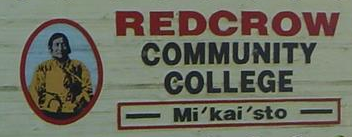Silverweed Cinquefoil – Argentina anserina (L.) Rydb. (Dry Root, Garters, Peeled Ground)
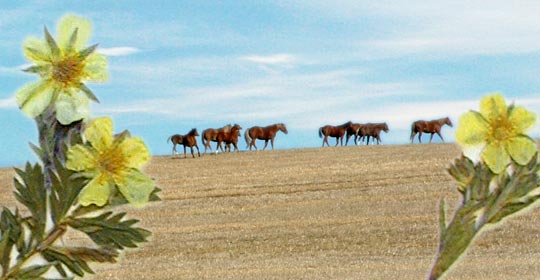
The Silverweed Cinquefoil bush has long roots which are hard to pull out. Horses are tied to this plant so that they can’t run away.
Silverweed Cinquefoil
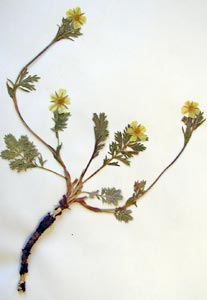
Argentina anserina (L.) Rydb.
Galileo Educational Network
Silverweed Cinquefoil belongs to the rose family of plants. They colour the places they grow with their bright yellow, five-petalled flowers. Cinquefoil is French for ‘five leaves’, and that is how this flower is arranged. It grows at the edge of sloughs and other wet places, in barnyards roadside ditches, and in low meadow areas. One flower (up to 2.5 cm in diameter) grows on each stalk. The Cinquefoil flowers from May to September. The leaves are grayish-green on the top and white and wooly underneath, which is why this plant is called Silverweed Cinquefoil. The leaves can have from 7-25 little leaflets.
This plant has very long roots and runners that can be used in several ways. The long roots can be ripped up from the sand (called rip roots) and used as a rope. Our elders would use the runners for tying things such as blankets, or to tie their leggings in place. That’s why they would call the plant “garters”.
The roots can also be made into a medicine tea for diarrhea and chest pains or mashed up as a dressing for cuts and scrapes.
Roots are best collected in the spring and make a good emergency or general food source if they are roasted and eaten. It is said they taste like parsnips but are much more woody.
The Cinquefoil plant can be soaked in water and once taken out people can drink the water to make them throw up, if there is something in their stomachs they need to get rid of.
Ansérine
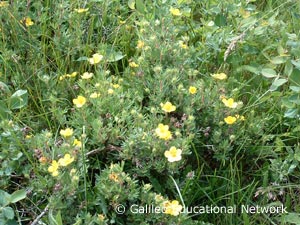
Argentina anserina (L.) Rydb.
Galileo Educational Network
L’ansérine appartient à la famille des roses. Cette plante met de la couleur là où elle pousse grâce à ses fleurs d’un jaune vif à cinq pétales. L’ansérine pousse en bordure des marécages et d’autres endroits humides, dans les fossés ainsi que dans les prés en basse altitude. Une fleur (mesurant jusqu’à 2,5 centimètres de diamètre) pousse sur chaque tige. Cette plante fleurit de mai à septembre. Ses feuilles sont de couleur gris-vert sur le dessus et de couleur blanche et d’apparence laineuse en dessous. Les feuilles peuvent être composées de 7 à 25 petites feuilles.
Cette plante a racines et stolons très longs qui sont très utiles. Nous pouvons arracher les racines du sol et nous en servir en guise de corde. Nos aînés les employaient pour attacher des objets comme des couvertures ou pour fixer leurs jambières.
Les racines de cette plante permettent aussi de faire du thé contre la diarrhée et les douleurs thoraciques. Écrasées, elles permettaient de panser les coupures et les égratignures.
La cueillette des racines se fait idéalement au printemps. Rôties, elles représentent une bonne source de nourriture en cas d’urgence ou non. Bien des personnes trouvent que ces racines goûtent un peu le panais, tout en ayant un goût de bois plus prononcé.
L’ansérine peut être trempée dans l’eau. Une fois retirée, nous pouvons boire l’eau qui reste afin de provoquer des vomissements ou nous débarrasser de quelque chose qui nous est resté sur l’estomac.
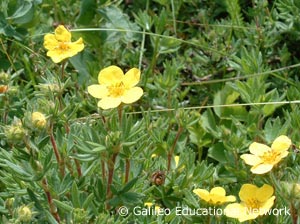
Argentina anserina (L.) Rydb.
Galileo Educational Network
- Hellson, John C. (1974). Ethnobotany of the Blackfoot Indians. Ottawa: National Museums of Canada.
- Johnston, Alex. (1987). Plants and the Blackfoot. Lethbridge, Alberta: Lethbridge Historical Society.
- Kerik, Joan. (1979). Living With The Land: Use of Plants by the Native People Of Alberta. Edmonton, Alberta: Provincial Museum of Alberta.
- Moerman, Daniel E. (1998). Native American Ethnobotany. Portland: Timber Press.
- Vance, F.R., Jowsley, J.R. & Mclean, J.S. (1984). Wildflowers Across The Prairies. Saskatoon, Saskatchewan: Western Producer Prairie Books.
- Willard, Terry. (1992). Edible and Medicinal Plants of the Rocky Mountains and Neighboring Territories. Calgary, Alberta: Wildrose College of Natural Healing.



